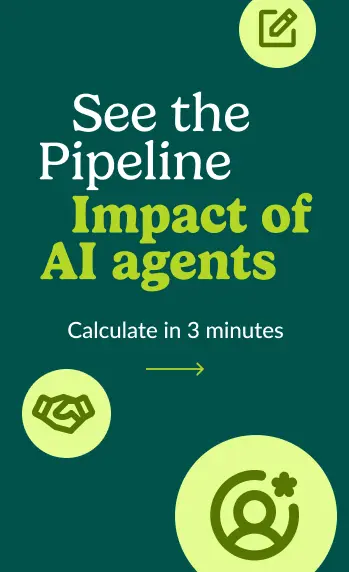RevTalks, Episode 7: It's a Race for Trust and Buyers Pick the Winner!
Published:

This interview has been edited for clarity and length.
Introduction
Linda Su:Hello, everyone. I hope you're having a great time at Salesloft on tour so far. I'm Linda Su, Senior Product Marketing Manager at Salesloft, and I'll be your host for this track. Welcome to RevTalks Live. If revenue pros are thinking it, we're saying it. In this three-part series, you're going to hear from revenue experts and your peers as they share their insights and best practices from the front lines of revenue.
Our goal today is for you to take some tangible takeaways and learnings back to your role, your organization, and your team. So, let's get started. In part one, we're going to talk about our buyers. We know that the B2B buyer journey has changed. Everything from the death of the MQL to buyers being more self-educated in a Digital First environment.
Well, what does that mean for your team and for you and your role? And what are the implications? To help us answer that question, I'm excited to bring to the stage Christian Kletzel, founder and CEO of UserGems, as well as Randy Littleson, CMO at Salesloft. Welcome to the stage, Randy and Christian.
Meet the Speakers
Randy Littleson:My name is Randy Littleson. I am head of marketing at Salesloft. I've been here since November. But prior to that, I've been in the industry a long time, over 30 years in various software companies of various sizes and shapes. Glad to be with you.
Christian Kletzel:Yes, hey everyone, I'm Christian Kletzel. I'm the CEO and co-founder of UserGems. I've been around the block a little bit. Interestingly, I'm an engineer at heart but now run the company and especially the revenue team. At UserGems, we capture the most valuable buyer signals, such as MyChampion's changing their job or new hires and promotions at target accounts. Then we help you automate the next steps, like putting them into Rhythm, into Salesloft Cadence, or notifying the owner on Slack. We help you generate pipeline, accelerate deals, and prevent churn.
The Changing B2B Buying Process
Randy Littleson:Alright, so what we want to talk about is, if you think about the root of B2B buying and selling, it's all about human relationships and trust. And our contention is, over the last several years, it's gotten a lot harder. Right? We've got complex buying processes now with buying committees and buying teams. There's a lot of self-service, digital interactions, and in-person interactions. That's what we want to double-click into a little bit. We hear that a lot from our customers, and that's what we wanted to talk a little bit about as we go through this.
The Complexity of Today's Buying Journey
This chart's interesting. It's got a lot of stats from various sources, but they talk a little bit about today's reality in the buying process. I'll pick out a couple of them. At the top, we see that 83 percent of buying research happens away from your vendor and your vendor sites. A lot of research is being done without you being directly engaged. Buyers are 70 percent of the way through the buying journey before talking to a seller. This reality forces us to look at our approach differently, and we should be adapting to it. The last one here is from Christian's organization: most companies miss 50 percent of the key buyers in their accounts. Talk to me a little more about that statistic. Why is that happening, and what can people do about it?
Missing Key Buyers
Christian Kletzel:Yeah, and why is that important? We all know there are now more buyers involved than ever before. Gartner's statistic mentions 10 people in an opportunity usually. Previously, it was FOMO, fear of missing out, so people bought every single tool. Now it's FOMO, fear of messing up, meaning people don't want to make a decision or risk budget from the company. Therefore, more and more people are involved in the buying process. When we connect with prospect or customer CRM, we find that more than 50 percent of key buyers are actually missing in your CRM. That means you're not in touch with the people who could potentially veto the deal. You need to figure out who is involved in a deal, who can stop it, and who can make it happen, and ensure your full revenue team (SDR, AE, CSM) gets in touch with everyone that matters in the organization.
Buyers and Anti-Buyers
Randy Littleson:I think that's really important. One of the things I talk about internally with our team is you've got your buyers and your anti-buyers. The buyers are the ones usually driving, initiating, and leading a project, often line of business. But if you don't have IT or finance involved, they can kill the project. That speaks to the point. You bring up a good point about the buyer journey and meeting people where they're at, providing value at the right time. This next chart shows the reality of the buying journey—it looks a lot more complex, with zig-zags and back-and-forth interactions with marketing and sales, digital and in-person engagements. The historical linear model is outdated. What are some key moments in that buying journey, and where are the revenue teams failing to capitalize today?
Importance of Buyer Signals
Christian Kletzel:It's always interesting to look at B2C selling and see what we can do in B2B. We're selling to humans. We look a lot at people's signals, specifically anything that happens in an account that can influence my deal, churn, or customer. For example, if I have new buyers or decision makers joining my target account, the first thing they do is evaluate the tech stack they have and need. If someone joins my target account and they previously used my product, I want to reach out and turn them into a customer. On the flip side, if my buyer leaves a customer account, it increases churn risk by about 70%. New decision-makers, like a new CMO or CRO, will evaluate which tools they need. We need to be part of this conversation within three months. I'm always quoting Hamilton: be in the room where it happens. We can't always be in the room ourselves, but we can make sure we're there either directly or through someone we talked to.
Adapting to the Complex Buying Journey
Randy Littleson:If we look at the buying journey, it's more complicated than ever. How is this impacting teams, and how can they deliver on these expectations?
Christian Kletzel:I think it's huge. I see many organizations that understand the way the buying process has changed, but people aren't changing their behavior. AI can be a huge asset here in terms of targeting, prioritizing, personalization at scale, and automation. We want to meet people in the journey, understand their persona and needs, and engage them in a value-added way. Embedding AI into the workflow is important for both sales and marketing. It's about orchestration, engaging at the right point in the process, and understanding the buyer to act in a personalized, value-added way. This way, we're adding value to the conversation and engaging buyers the way they like to buy, delivering value from the entire revenue team.
The Buying Experience
Christian Kletzel:What we heard before is super important. The buying experience matters. The sales team focuses on human-in-the-loop, ensuring good communication but always with a human involved to build trust. The last chart shows the buying experience's importance, sometimes more critical than the product or service. The scores for the experience aren't very good and have gotten worse. The process has gotten more complex, leading to a deteriorating situation on an important metric that determines success.
Salesloft's Response to the Changing Landscape
Randy Littleson:We've heard a lot about Salesloft and the new product you're launching. What is Salesloft doing about this?
Christian Kletzel:We take the alignment of sales and marketing, and even the customer service team, seriously. The old linear sequential handoff model is outdated. We're acting aggressively based on signals and understanding what the buyer is trying to do to respond appropriately. We're leveraging our own technology and acting on signals to be timely, responsive, and engage thoughtfully. I'm excited about the acquisition of Drift, allowing a great experience on the website and integrating directly into rhythm. This helps us engage buyers early, understand their interests, and have sellers engage appropriately at the right time.
Alignment of Sales and Marketing
Randy Littleson:It helps marketing and sales align. Marketing produces many signals, but it's difficult for sales reps to identify and act on them. Marketing is disappointed that people don't action it, and sales reps find it challenging. It works in both directions. If you're not sharing information between sales and marketing, both teams execute suboptimally. Marketing should engage the rest of the buying committee, adding value to help them get comfortable. Sharing signals, insights, and intent between both groups is essential.
Signal-Based Go-to-Market Strategy
Christian Kletzel:It's about signal-based go-to-market. If nobody actions a signal, it's useless. It's about making sure something important gets an action from the sales or marketing team. Whether building new business or reducing churn, it's about timed moments and engaging people at the right time with value-added information. What are you doing at UserGems to ensure that these signals are captured and acted upon?
Christian Kletzel:At UserGems, we use AI to capture these critical signals, such as job changes or new hires in target accounts. Once we identify these signals, we automate the next steps, like updating CRM, notifying account owners, or triggering personalized outreach through platforms like Salesloft. This ensures that our teams can engage with the right person at the right time with relevant and valuable information.
Final Thoughts
Randy Littleson:That's great. The key takeaway here is that the buying process has changed, and so must our strategies. By leveraging AI and aligning our sales and marketing efforts, we can better meet the needs of our buyers and ultimately build stronger, trust-based relationships.
Linda Su:Thank you, Randy and Christian, for your insights. It's clear that understanding and adapting to the changing buyer journey is crucial for success. For everyone watching, we hope you’ve found these insights helpful and can take some actionable strategies back to your teams.
Randy Littleson:Absolutely. It's about being proactive, responsive, and always adding value. Thanks for having us.
If revenue pros are thinking it, we're saying it. Join us as go-to-market experts share their best advice and insights from the frontlines of revenue — with tactics you can immediately implement at your organization.
Navigate the B2B Buyer Journey
Salesloft's RevTalks show is live! In this episode, Christian Kletzel (CEO of UserGems) and Randy Littleson (CMO at Salesloft) hash out the complexities of modern buying processes driven by digital interactions and self-education. They stress the need for sales and marketing alignment, signal-based go-to-market strategies, and ensuring all potential decision-makers are addressed to navigate the intricate journey of today's B2B buyers effectively.
Check out the rest of the series below
If you enjoyed this episode, you can watch more RevTalks below or by visiting our Resource Center.





























